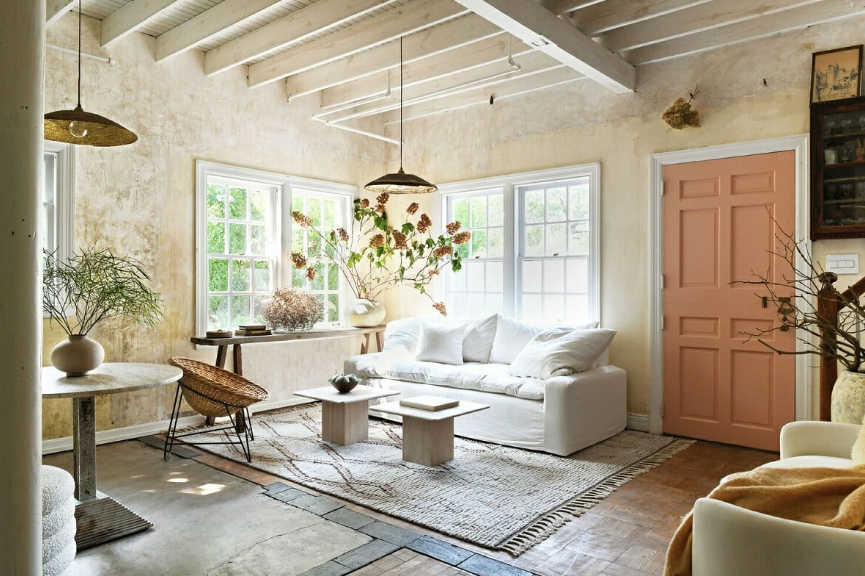Sustainable interior design is more than just a trend — it’s a smart approach to creating living spaces that are environmentally friendly, energy-efficient, and stylish. By incorporating sustainable design principles, you can elevate your home’s aesthetic while reducing its environmental impact and potentially saving money in the long run.
Space:
One of the fundamental aspects of sustainable design is maximising the efficient use of space. This doesn’t necessarily mean living in a tiny home, but rather thoughtfully planning your layout to ensure every square foot serves a purpose. Consider multi-functional rooms, such as a combined study/guest room, instead of having separate, rarely used areas. This approach not only reduces the overall size of your home but also minimises energy consumption for heating and cooling.

Materials and Construction:
Choosing the right materials for your home can significantly impact its sustainability. Use doors and windows that maximise energy savings, flooring from rapidly renewable sources like bamboo, and water-conserving fixtures. When it comes to construction materials, explore eco-friendly options such as sustainable cement. These choices not only contribute to environmental conservation but also redefine contemporary home style.
Choose materials that are not only environmentally friendly but also safe for your health. This includes using organic paints, wood, and recycled materials. Antique furniture can be refurbished, adding character to your home while reducing waste.
Lighting:
Incorporating windows and skylights can maximise the use of natural light, reducing the need for artificial lighting. When artificial light is necessary, go for energy-efficient options like LEDs and fluorescent bulbs. This approach not only conserves energy but also creates a more pleasant living environment.
Renewable Energy:
Consider incorporating renewable energy sources like solar panels. These can significantly reduce your reliance on wasteful energy and lower your carbon footprint. While the initial investment might be substantial, the long-term benefits in terms of energy savings and environmental impact are worth it.
Eco-friendly Fabrics:
When selecting fabrics and furnishings, go for eco-friendly options. Organic cotton, hemp, and other natural fibres are excellent choices for upholstery and textiles. Look for furniture made from natural wood or sustainably sourced materials. These choices not only contribute to a healthier home environment but also add unique character to your space.

Indoor Air Quality:
Pay attention to indoor air quality by choosing low-VOC paints and incorporating plants into your design. Plants not only add a natural aesthetic but also help purify the air. Consider creating living walls to maximise this benefit.
Upcycling
Get creative with upcycling and re-purposing existing items. This not only reduces waste but can also result in unique, personalised design elements. Old doors can become headboards, vintage suitcases can serve as side tables, and mason jars can be transformed into light fixtures.
To conclude, by embracing these sustainable design principles with Oraanj Interior Design, you’re not just creating an eco-friendlier home; you’re also likely to increase your property’s value. Energy-efficient homes tend to hold their value better over time as they align with evolving environmental regulations and growing demand for sustainable living. Remember, transitioning to a more sustainable home doesn’t have to happen overnight. Take a gradual approach, making thoughtful decisions as you renovate or redecorate. Each small change contributes to a larger positive impact, creating a home that’s not only beautiful and comfortable but also kind to the planet.

